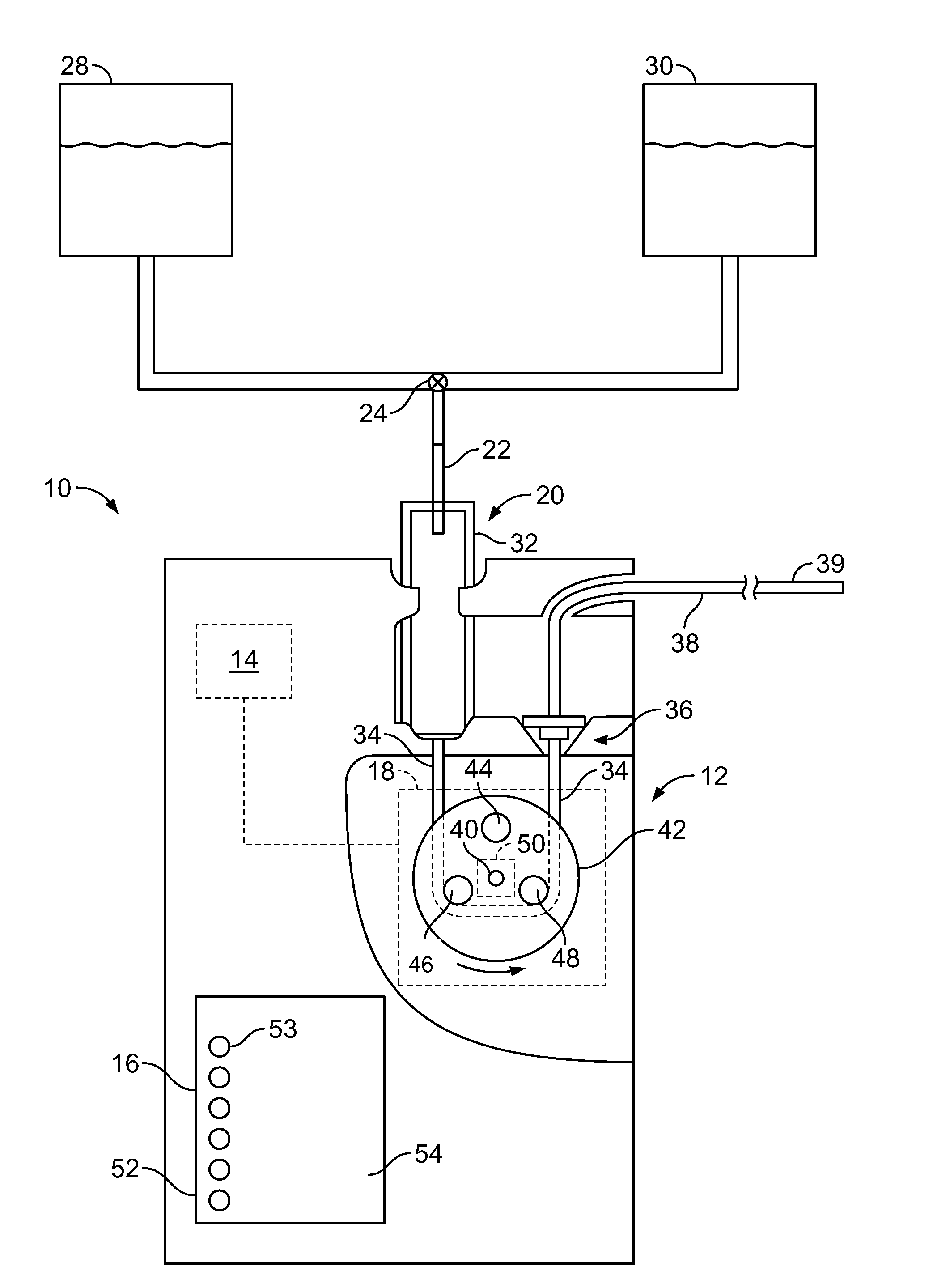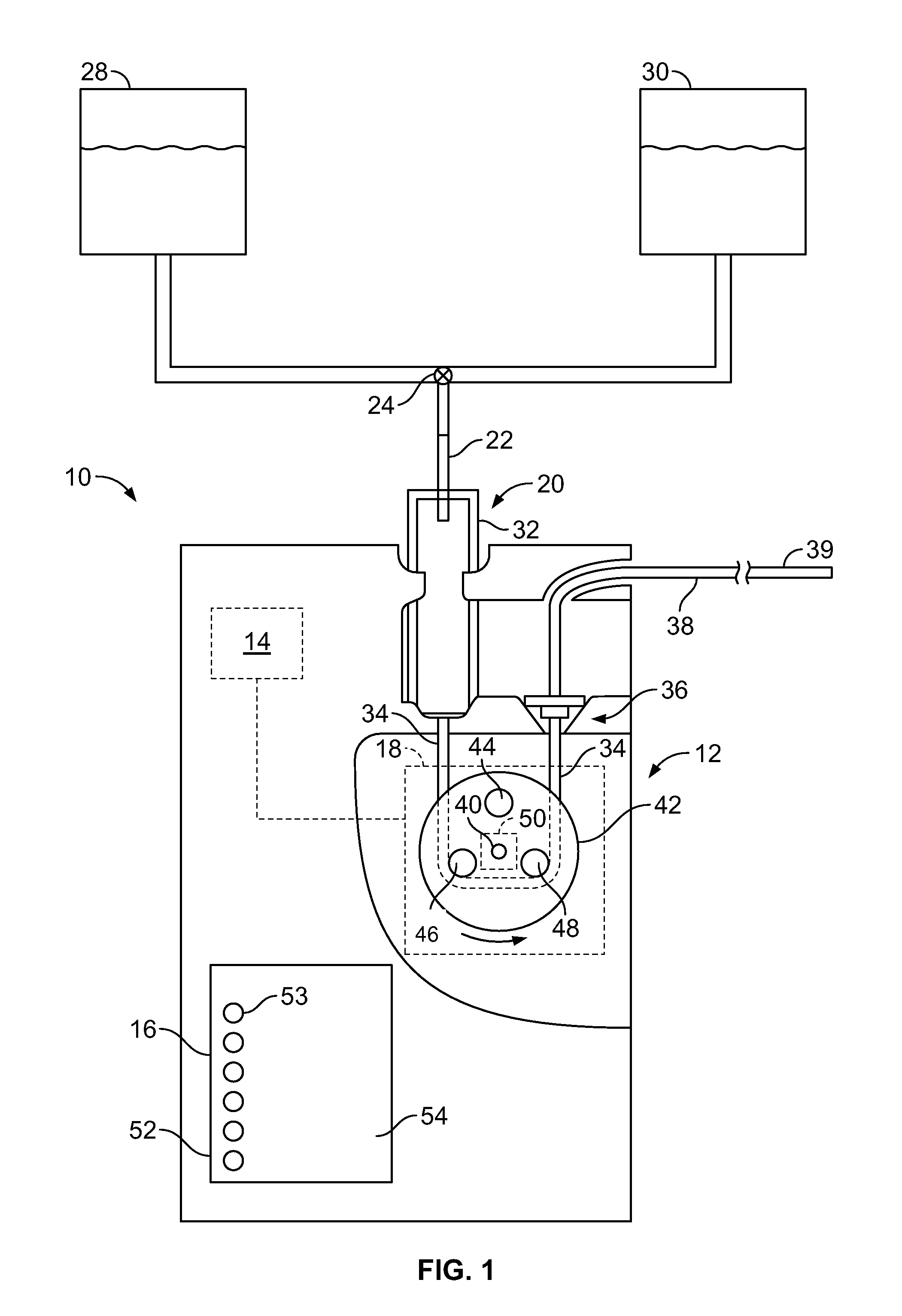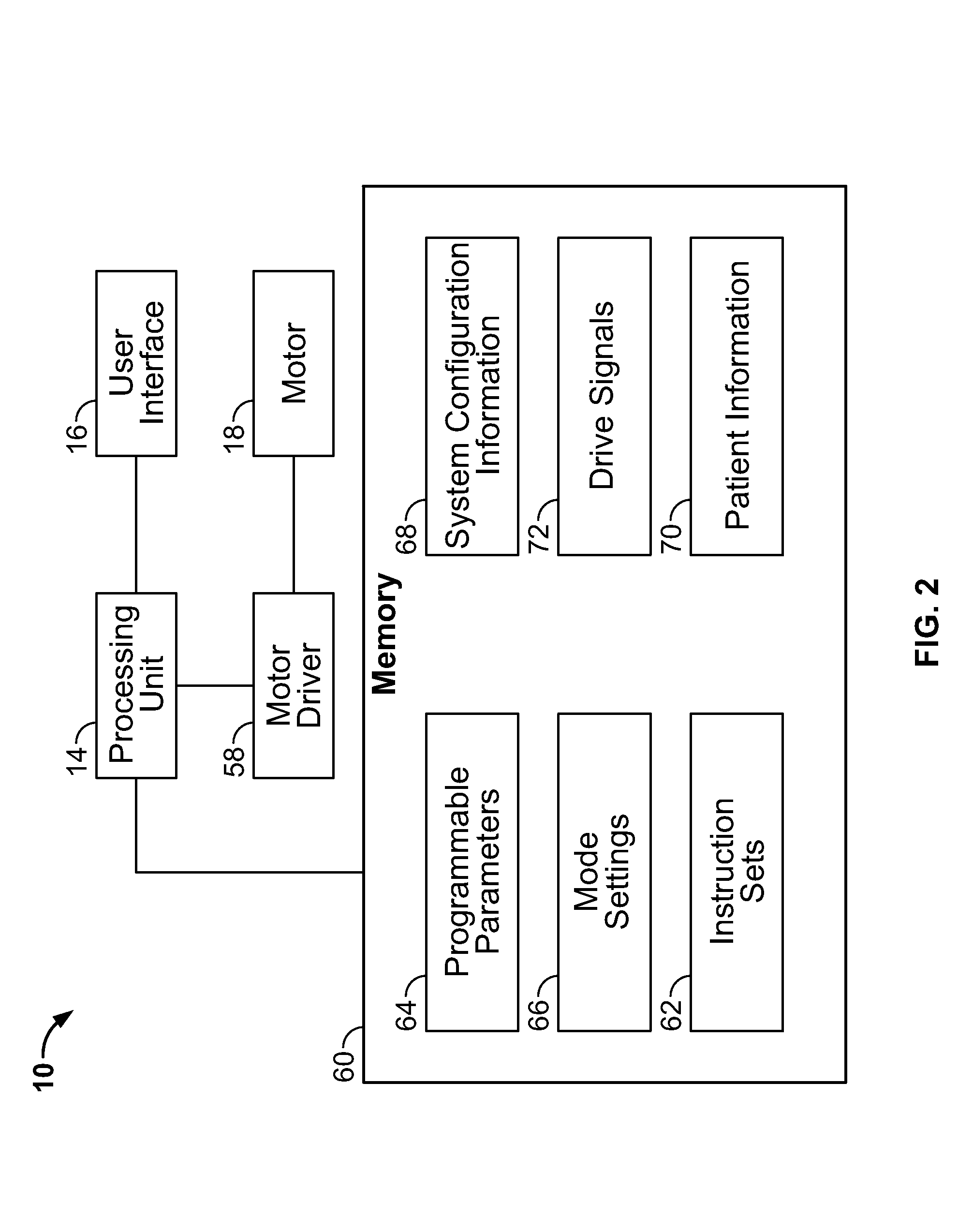Enteral fluid delivery system and method for opeating the same
a technology of fluid delivery system and feeding tube, which is applied in the direction of suction device, intravenous device, other medical devices, etc., can solve the problems of obstructing the feeding tube, posing a health hazard to patients, and requiring a large amount of time, effort and resources to unclog the feeding tub
- Summary
- Abstract
- Description
- Claims
- Application Information
AI Technical Summary
Benefits of technology
Problems solved by technology
Method used
Image
Examples
Embodiment Construction
[0019]FIG. 1 is a block diagram of an exemplary enteral fluid delivery system 10 formed in accordance with an embodiment of the present invention. The system 10 generally includes a pump unit 12 for pumping enteral fluids, such as but not limited to, enteral medication, feed, and flush fluids, during medication, feed, and flush cycles, respectively. The system 10 also includes a processing unit 14 operatively connected to the pump unit 12 for controlling the pump unit 12 during the feed and flush cycles. A user interface 16 is operatively connected to the processing unit 14 to enable a user to control operation of the system 10.
[0020]The pump unit 12 includes a motor 18 and a fluid delivery set 20. The fluid delivery set 20 includes an inlet tube 22 having an inlet 24 coupled in fluid communication with feed and flush fluid sources 28 and 30, respectively. The feed and flush fluid sources 28 and 30, respectively, may each be any suitable type of source, such as, but not limited to, ...
PUM
 Login to View More
Login to View More Abstract
Description
Claims
Application Information
 Login to View More
Login to View More - R&D
- Intellectual Property
- Life Sciences
- Materials
- Tech Scout
- Unparalleled Data Quality
- Higher Quality Content
- 60% Fewer Hallucinations
Browse by: Latest US Patents, China's latest patents, Technical Efficacy Thesaurus, Application Domain, Technology Topic, Popular Technical Reports.
© 2025 PatSnap. All rights reserved.Legal|Privacy policy|Modern Slavery Act Transparency Statement|Sitemap|About US| Contact US: help@patsnap.com



